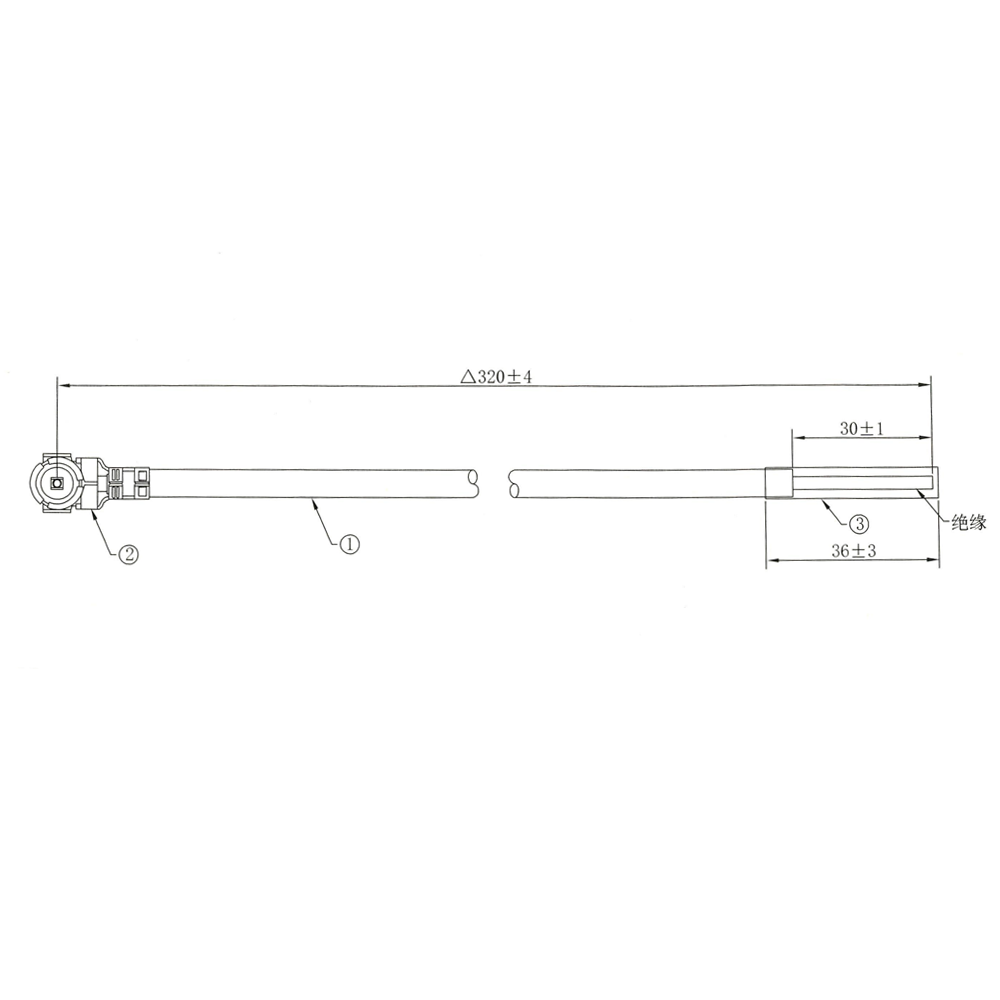overview
Definition and Importance
A multi-band compact GNSS antenna is designed to receive signals from multiple GNSS frequency bands simultaneously while maintaining a small physical size. These antennas are crucial for applications where space is limited, such as in unmanned aerial vehicles (UAVs), handheld devices, and automotive navigation systems. By supporting multiple frequency bands, these antennas enhance the reliability and accuracy of PNT solutions, especially in challenging environments where signal obstruction or interference is common.
Evolution of GNSS Antennas
The development of GNSS antennas has evolved from single-band to multi-band solutions to meet the increasing demands for accuracy and reliability. Early GNSS antennas were primarily designed for GPS L1 band reception. However, with the advent of modernized GPS signals (L2C, L5) and other GNSS constellations operating on different frequency bands, the need for multi-band antennas became apparent. Compact design considerations have further driven innovation, leading to the development of antennas that combine high performance with a small footprint.
Technological Advancements
Technological advancements in materials science, antenna design, and manufacturing processes have played a pivotal role in the development of multi-band compact GNSS antennas. Innovations such as metamaterials, 3D printing, and advanced simulation tools have enabled the creation of antennas with complex geometries and optimal electrical properties. These advancements have facilitated the integration of multiple frequency bands into a single compact antenna, overcoming traditional design limitations.
Market Trends and Demand
The market for multi-band compact GNSS antennas has witnessed significant growth, driven by the proliferation of GNSS-enabled devices across various sectors. Industries such as automotive, aerospace, agriculture, and consumer electronics are increasingly adopting high-precision GNSS solutions, fueling the demand for compact, multi-band antennas. Additionally, the rise of autonomous vehicles and the Internet of Things (IoT) is expected to further accelerate market growth, creating new opportunities for antenna manufacturers.
Design and Construction
Antenna Design Principles
Designing a multi-band compact GNSS antenna requires a deep understanding of electromagnetic theory, antenna principles, and GNSS signal characteristics. Key design considerations include frequency band selection, polarization, gain, bandwidth, and size constraints. The antenna must be capable of efficiently receiving signals across multiple frequency bands while maintaining a compact form factor, which poses significant challenges in terms of antenna element placement and interaction.
Frequency Bands and Polarization
Multi-band compact GNSS antennas are typically designed to operate across multiple GNSS frequency bands, such as GPS L1/L2/L5, GLONASS G1/G2, Galileo E1/E5a/E5b, and BeiDou B1/B2/B3. Each frequency band has unique characteristics, requiring the antenna to exhibit optimal performance across a wide range of frequencies. Polarization is another critical aspect, with most GNSS signals being right-hand circularly polarized (RHCP). The antenna must be designed to efficiently receive RHCP signals while minimizing the reception of left-hand circularly polarized (LHCP) signals, which can introduce errors.
Gain and Bandwidth
Gain and bandwidth are essential parameters that determine the antenna's ability to receive weak signals and its operational frequency range. High gain is preferred for GNSS applications, as it enhances the antenna's sensitivity to weak signals, improving positioning accuracy. However, achieving high gain in a compact antenna is challenging due to size constraints. Bandwidth is equally important, as the antenna must be capable of receiving signals across multiple frequency bands without significant performance degradation. Advanced design techniques, such as the use of multiple resonators or frequency-selective surfaces, are employed to achieve the desired gain and bandwidth characteristics.
Size Constraints and Compact Design
The primary challenge in designing multi-band compact GNSS antennas is achieving high performance in a small form factor. This requires innovative approaches to antenna element placement, such as stacking or interleaving elements, and the use of advanced materials to minimize size while maintaining electrical performance. Additionally, the antenna's radome, which protects the antenna elements from the environment, must be designed to minimize signal attenuation and distortion while maintaining a compact profile.
Construction Materials and Techniques
The construction of multi-band compact GNSS antennas involves the use of high-quality materials and advanced manufacturing techniques. The antenna elements are typically made from conductive materials such as copper or silver-plated brass, which exhibit low electrical resistance and high conductivity. The substrate material, which supports the antenna elements, must have a low dielectric constant and low loss tangent to minimize signal attenuation. Advanced manufacturing techniques, such as laser direct structuring (LDS) and 3D printing, are used to produce antennas with precise geometric shapes and optimal electrical properties, enabling the integration of multiple frequency bands into a single compact design.
Working Principles
Signal Reception and Processing
The primary function of a multi-band compact GNSS antenna is to receive GNSS signals from multiple frequency bands and convert them into electrical signals that can be processed by a GNSS receiver. The antenna achieves this by resonating at the frequencies of the incoming signals, causing the electrical fields to induce currents in the antenna elements. These currents are then amplified and filtered to remove noise and interference before being fed into the GNSS receiver.
Multi-Band Resonance
Multi-band compact GNSS antennas utilize advanced design techniques to achieve resonance at multiple frequency bands simultaneously. This is typically accomplished through the use of multiple resonators or frequency-selective surfaces that are tuned to specific frequency bands. The interaction between these resonators or surfaces enables the antenna to receive signals across a wide range of frequencies, while maintaining optimal performance at each band.
Phase Center Stability
The phase center of an antenna is the point from which the received signals appear to originate. For high-precision GNSS applications, it is crucial that the phase center remains stable over time and temperature variations, as any changes can introduce errors in the positioning solution. Multi-band compact GNSS antennas are designed to maintain phase center stability through the use of high-quality materials and precise manufacturing techniques. Additionally, some antennas incorporate phase center correction algorithms to further enhance accuracy.
Antenna Calibration
Antenna calibration is a critical process that ensures the accurate measurement of GNSS signals. During calibration, the antenna's response to signals from different directions and frequencies is characterized, allowing the GNSS receiver to correct for any antenna-induced errors. Multi-band compact GNSS antennas require comprehensive calibration procedures that account for the unique characteristics of each frequency band. This calibration data is then stored in the antenna's memory or provided to the GNSS receiver for real-time correction.
Integration with GNSS Receivers
Multi-band compact GNSS antennas are designed to work seamlessly with GNSS receivers, which process the received signals to determine the antenna's position, velocity, and time. The antenna and receiver must be compatible in terms of frequency bands, signal formats, and communication protocols. Modern GNSS receivers often incorporate advanced signal processing algorithms that can exploit the full potential of multi-band antennas, such as multi-constellation combination and ambiguity resolution techniques, to further improve positioning accuracy and reliability.
Advantages and Challenges
-
Advantages
High Precision: By receiving signals from multiple GNSS frequency bands, multi-band compact GNSS antennas enable high-precision positioning solutions, even in challenging environments where signal obstruction or interference is prevalent.
Compact Size: The compact form factor of these antennas makes them ideal for applications where space is limited, such as in UAVs, handheld devices, and automotive navigation systems.
Multi-Constellation Support: Many multi-band compact GNSS antennas are designed to support multiple GNSS constellations, further enhancing the reliability and accuracy of PNT solutions through redundancy and global coverage.
Future-Proofing: As new GNSS signals and constellations are developed, multi-band compact GNSS antennas provide a future-proof solution that can adapt to these changes without requiring significant hardware modifications.
Challenges
Design Complexity: Designing a multi-band compact GNSS antenna that achieves high performance across multiple frequency bands while maintaining a small form factor is a complex task that requires advanced design techniques and materials.
Manufacturing Cost: The use of high-quality materials and advanced manufacturing techniques often results in higher production costs for multi-band compact GNSS antennas compared to single-band antennas.
Signal Interference: The simultaneous reception of signals from multiple frequency bands can increase the risk of interference, especially in urban environments where signal reflection and diffraction are prevalent. Advanced signal processing techniques are required to mitigate these effects.
Calibration and Maintenance: Multi-band compact GNSS antennas require comprehensive calibration procedures to ensure accurate measurement of GNSS signals. Additionally, regular maintenance is necessary to maintain phase center stability and overall antenna performance, which can add to the total cost of ownership.
Applications and Future Trends
-
Applications
Unmanned Aerial Vehicles (UAVs): Multi-band compact GNSS antennas are widely used in UAVs for precise navigation and positioning, enabling applications such as aerial photography, surveying, and delivery services.
Automotive Navigation: These antennas are essential for automotive navigation systems, providing accurate positioning data for driver assistance systems, autonomous vehicles, and fleet management solutions.
Handheld Devices: The compact size of multi-band GNSS antennas makes them ideal for integration into handheld devices such as smartphones, tablets, and handheld GPS receivers, enabling precise positioning for outdoor activities and location-based services.
Precision Agriculture: In agriculture, multi-band compact GNSS antennas enable precise navigation of autonomous tractors and harvesters, optimizing crop yields and reducing resource waste through precision farming techniques.
Future Trends
Integration with 5G and IoT: The integration of multi-band compact GNSS antennas with 5G networks and the Internet of Things (IoT) is expected to open up new applications, such as real-time asset tracking, smart city infrastructure management, and connected vehicle solutions.
Miniaturization and Low-Power Design: Advances in materials science and antenna design are leading to the development of even smaller and more power-efficient multi-band compact GNSS antennas, expanding their portable and mobile applications.
Enhanced Signal Processing: The continued development of advanced signal processing algorithms will further improve the performance of multi-band compact GNSS antennas, enabling even higher levels of accuracy and resilience in challenging environments.
Expansion of GNSS Constellations: As new GNSS constellations are launched and existing ones are upgraded, multi-band compact GNSS antennas will play an increasingly important role in providing global coverage and redundancy, ensuring the continued availability of high-precision PNT services.
Conclusion
The multi-band compact GNSS antenna represents a significant advancement in GNSS technology, offering high precision, compact size, and multi-constellation support. Despite the challenges associated with their design, manufacturing, and maintenance, these antennas have become indispensable tools for a wide range of applications, from UAVs and automotive navigation to handheld devices and precision agriculture. As technology continues to evolve, multi-band compact GNSS antennas will play an increasingly important role in shaping the future of positioning, navigation, and timing, enabling new applications and transforming existing industries. The continued investment in research and development, coupled with the expansion of GNSS constellations, will ensure that multi-band compact GNSS antennas remain at the forefront of GNSS technology for years to come, providing reliable and accurate PNT solutions in an ever-changing world.




































































 Language
Language
 En
En Cn
Cn Korean
Korean

 Home >
Home > 






 18665803017 (Macro)
18665803017 (Macro)













